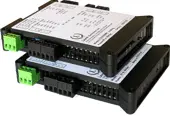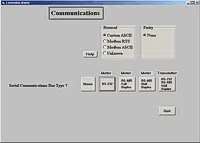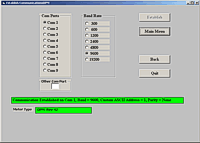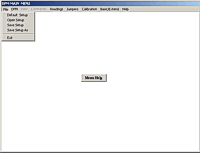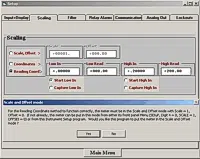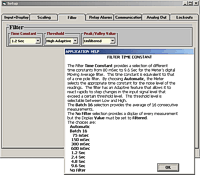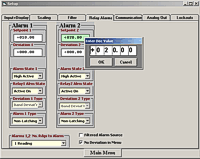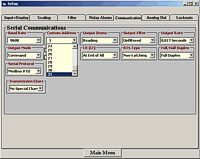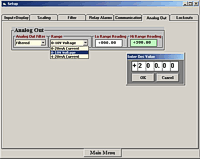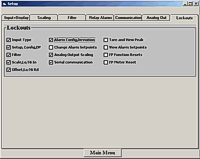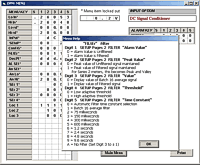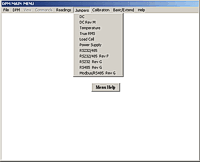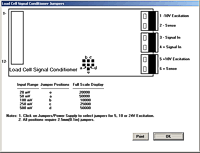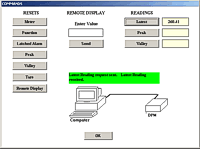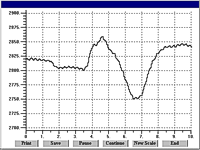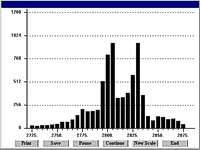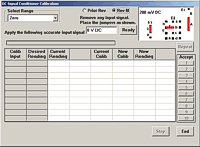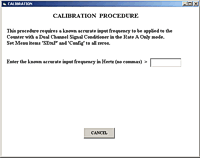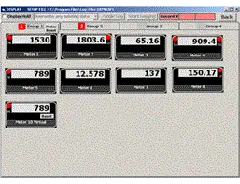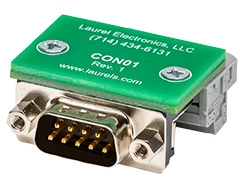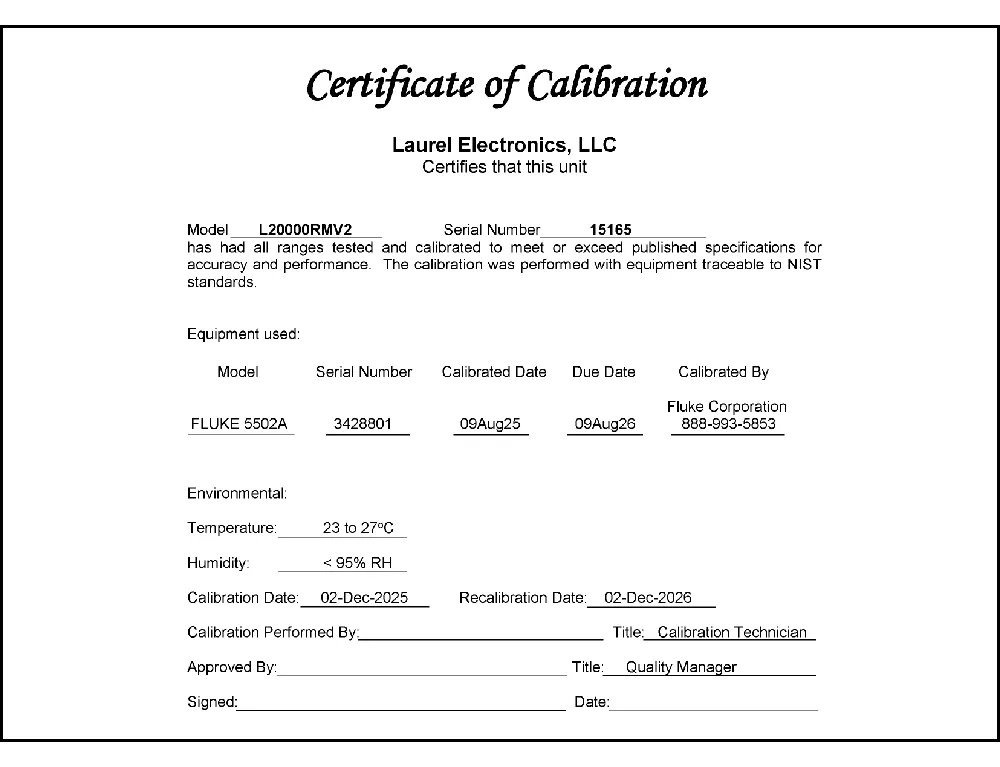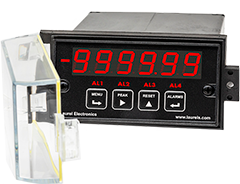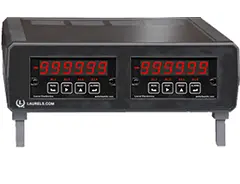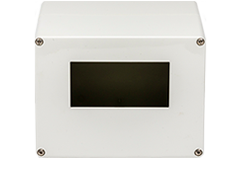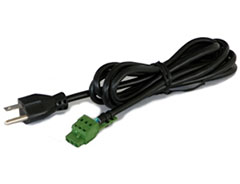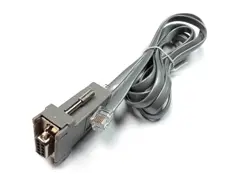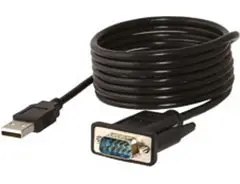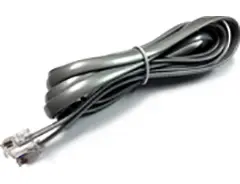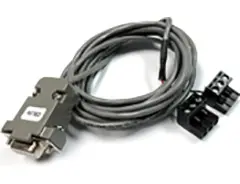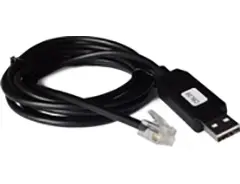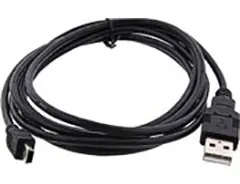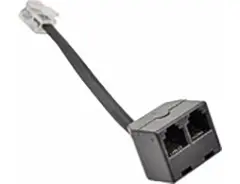Features
- Two independently scalable totals for Channels A & B
- Inputs from NPN or PNP proximity switches, contact closures, digital logic, magnetic pickups down to 12 mV, or AC inputs up to 250 Vac
- Two independently field-scalable pulse input channels from 0.005 Hz to 1 MHz
- Up counting from zero to preset value using positive scale factor
- Down counting from preset to zero using negative scale factor
- Totals stored in non-volatile memory
- Digital span adjust from 0 to ±999,999, zero adjust from -999,999 to +999,999
- Front panel scalable: to ±999,999 for use with current shunts
- 1/8 DIN size with bright red or green 0.56" (14.2mm), high LED digits
- Transducer excitation output, 5, 10, 12, or 24 Vdc (isolated)
- Power 85-264 Vac / 90-300 Vdc or 10-48 Vdc / 12-32 Vac (isolated)
- Operating temperature from -40°C to 70°C (-40°F to 158°F)
- Wide choice of Plug-in-Play options:
- 2 or 4 relays, mechanical or solid state, for alarm or control (isolated)
- 1 or 2 Analog output, 4-20 mA, 0-20 mA, 0-10V, or -10V to +10V (isolated)
- Communications: Ethernet, WiFi, USB, RS232, RS485 (isolated)
- Extended DPM version - See below for all capabilities
Certificates of Compliance
The Laureate 1/8 DIN Panel Meter for dual-channel up or down totalizer
is a Standard operating mode of the Laureate counter with the FR dual-channel signal conditioner board that can display frequencies from 0.005 Hz to 1 MHz. Each channel (A or B) may be independently set up and scaled to count up from zero (or other value) to a preset limit, or to count down from a preset value to zero (or other limit). Countdown operation is set up by entering a negative scale factor.The six-digit counter display is capable of displaying any value from -999,999 to 999,999 with a programmable decimal point. Scaling allows direct readout in engineering units, such as gallons or cubic feet based on counts from a turbine flowmeter, or the count of cans based on the count of six-packs. The displayed channel (A or B) is selected via a front panel pushbutton. The totals are stored in non-volatile memory so as to be retained in the absence of power.
The minimum recommended complementary option for the Laureate totalizer is the dual setpoint controller output board, which is available with either 8A relays or AC/DC solid state relays.
The Laureate Panel Meter is easily programmed with Laurel’s free Instrument Setup Software, downloadable from our website and compatible with Windows PCs, requiring a data interface board for setup.
All signal conditioner board ranges are factory-calibrated, with calibration factors for each range securely stored in an onboard EEPROM. These factors can be scaled via software to accommodate external shunts, enabling field replacement of signal conditioner boards without necessitating recalibration of the associated panel meter. For optimal accuracy, factory recalibration is recommended annually. All Laurel Electronics instruments undergo factory calibration using the industry-leading Fluke calibrators, which are recalibrated yearly and certified traceable to national standards, ensuring the highest level of precision and reliability.
An Optional Extended DPM Provides Capabilities Beyond Those of the Standard Counter:
- Rate and total simultaneously. Channel A can display total while Channel B displays rate. The selection of A or B for display is via a front panel pushbutton. This mode is ideal for flow applications.
- Up/down counting. Channel A can serve as an up/down counter, where the count direction is dynamically changed by applying a signal to Channel B. For instance, Channel A can count and scale pulses from a turbine flow meter, while Channel B inputs the direction of flow. This allows total volume to be tracked in case of reversible flow.
- Totalizing with external inhibit. Totalizing by Channel A can be temporarily inhibited by applying a signal to Channel B. For instance, 60 Hz AC pulses can be counted by Channel A and be scaled to display elapsed hours. A signal can be applied to Channel B to start or stop pulse counting when a process is in operation.
- Custom curve linearization. Exceptionally accurate custom curve linearization is achievable, for example to linearize the low end of turbine flow meters. For setup, up to 180 data points can be input into a spreadsheet or text file by the user. The computer then calculates spline fit segments, which are downloaded into the panel meter via RS232. The linearized rate can then be totalized by the Extended counter.
- Arithmetic functions. The Extended counter makes arithmetic functions available, namely A+B, A-B, AxB, A/B and A/B-1. These solve many applications. For instance, A+B allows two input flows to be summed for total volume, while A-B allows outflow to be subtracted from inflow for net volume. A/B allows the mixing of ingredients in a specified ratio. By monitoring and alarming the A/B volume ratio, ingredient B can be added to A until the proper ratio is achieved.
The FR dual-channel signal conditioner accepts inputs from proximity switches with a PNP or NPN output, TTL or CMOS logic, magnetic pickups, contact closures, low-level outputs from turbine flow meters down to 12 mV, and high-level AC line inputs up to 250 Vac. Jumper selections provide optimum operation for different sensor types and noise conditions. A built-in (isolated) 5, 10, 12, or 24 Vdc excitation supply can power proximity switches and other sensors, and eliminate the need for an external power supply.
- An unfiltered selection provides true peak and valley readings and aids in control applications.
- A batch average filter selection averages each 16 conversions.
- An adaptive moving average filter selection provides a choice of 8 time constants from 80 ms to 9.6 seconds. When a significant change in signal level occurs, the filter adapts by briefly switching to the shortest time to follow the change, then reverts back to its selected time constant. An Auto setting selects the time constant selection based on signal noise.
Peak and valley values are automatically captured. These may be displayed via a front panel pushbutton command or control signal at the rear connector, or be transmitted as serial data.
Two rear panel control Inputs (CMOS/TTL levels, logic 0 = tied to digital ground, logic 1 = open) or dry contacts that can be set to control / activate 14 meter commands.
An (isolated) 5, 10, 12, or 24 Vdc excitation output is standard to power transducers or two-wire transmitters. Ratiometric operation, which automatically compensates for changes in the applied excitation, is jumper selectable for applications, such as bridges, where the signal to be measured is proportional to the excitation level.
| Display | |
|---|---|
| Readout | 6 LED digits, 7-segment, 14.2 mm (.56"), red or green. |
| Color | Red or green LED |
| Display Range | -999,999 to +999,999, XXXXEX notation beyond 999,999 |
| Zero Adjust | -999,999 to +999,999 |
| Span Adjust | 0 to ±999,999 |
| Indicators | Four LED lamps |
| Inputs | |
| Types | AC, pulses from NPN, PNP transistors, contact closures, magnetic pickups. |
| Signal Ground | Common ground for channels A & B |
| Channel A Freq. | 0 Hz to 1 MHz |
| Channel B Freq. | 0 Hz to 250 kHz |
| Minimum Signal | Nine ranges from (-12 to +12 mV) to (+1.25 to +2.1V). |
| Maximum Signal | 250 Vac |
| Noise Filter | 1 MHz, 30 kHz, 250 Hz (selectable) |
| Contact Debounce | 0, 3, 50 ms (selectable) |
| Recalibration: All ranges are calibrated at the factory. Recalibration is recommended every 12 months. | |
| Excitation Output (standard) | |
| 5 Vdc | 5 Vdc ± 5%, 100 mA (jumper selectable) |
| 10 Vdc | 10 Vdc ± 5%, 120 mA (jumper selectable) |
| 12 Vdc | 12 Vdc ± 5%, 100 mA (jumper selectable) |
| 24 Vdc | 24 Vdc ± 5%, 50 mA (jumper selectable) |
| Output Isolation | 50 Vdc from signal ground |
| Power Supply Boards (one required) | |
| Voltage, standard | 85-264 Vac or 90-300 Vdc |
| Voltage, optional | 12-32 Vac or 10-48 Vdc |
| Frequency | DC or 47-63 Hz |
| Power consumption (typical, base meter) | 1.2W @ 120 Vac, 1.5W @ 240 Vac, 1.3W @ 10 Vdc, 1.4W @ 20 Vdc, 1.55W @ 30 Vdc, 1.8W @ 40 Vdc, 2.15W @ 48 Vdc |
| Power Isolation | 250V rms working, 2.3 kV rms per 1 min test |
| Analog Output Boards (one optional) | |
| Output levels | 4-20 mA, 0-20 mA, 0-10V, -10 to +10V (single-output option) |
| 4-20 mA, 0-20 mA, 0-10V (dual-output option) | |
| Current compliance | 2 mA at 10V ( > 5 kΩ load) |
| Voltage compliance | 12V at 20 mA (< 600 Ω load) |
| Scaling | Zero and full scale adjustable from -99999 to +99999 |
| Resolution | 16 bits (0.0015% of full scale) |
| Isolation | 250V rms working, 2.3 kV rms per 1 min test |
| (dual analog outputs share the same ground) | |
| Relay Output Boards (one optional) | |
| Dual magnetic relays | 2 Form C, 10A max, 440Vac or 125Vdc max, 2500VA or 300W |
| Quad magnetic relays | 4 Form A (NO), 10A max, 440Vac or 125Vdc max, 2500VA or 300W |
| Dual solid state relays | 2 Form A (NO), AC or DC, 0V - 400V, 120Ma, 35Ohms (max at On-State) |
| Quad solid state relays | 4 Form A (NO), AC or DC, 0V - 400V, 120Ma, 35Ohms (max at On-State) |
| Relay commons | Isolated commons for dual relays or each pair of quad relays |
| Relay isolation | 250V rms working, 2.3 kV rms per 1 minute test |
| Relay latching modes | Latching or non-latching |
| Relay active modes | Active on or off, active high or low |
| Hysteresis modes | QA passband mode, split hysteresis, span hysteresis |
| Communication Boards (one optional) | |
| Board selections | RS232, RS485 with dual RJ11 connectors, RS485 with dual RJ45 connectors, USB, Ethernet, USB-to-RS485 gateway, Ethernet-to-RS485 gateway, WiFi with built-in antenna plus USB & RS485, WiFi with external antenna plus USB & RS485 |
| Protocols | Laurel Custom ASCII (serial), Modbus RTU (serial), Modbus TCP (Ethernet or WiFi) |
| Digital addresses | 247 (Modbus), 31 (Laurel ASCII), |
| Isolation | 250V rms working, 2.3 kV rms per 1 min test |
| Environmental | |
| Operating temperature | -40°C to 70°C (-40°F to 158°F) |
| Storage temperature. | -40°C to 85°C (-40°F to 185°F) |
| Relative humidity | 95% at 40°C, non-condensing |
| Protection | NEMA-4X (IP-65) when panel mounted |
| Signal Connections | |
 |
|
| Mechanical | |
| Enclosure | 1/8 DIN, high impact plastic, UL 94V-0, color: black |
| Mounting | 1/8 DIN panel cutout required: 3.622" x 1.772" (92 mm x 45 mm). |
| Dimensions | 4.68" x 2.45" x 5.64" (119 mm x 62 mm x 143 mm) (W x H x D) |
| Maximum panel thickness | 4.5 mm (0.18") |
| Tightening Torque - Connectors | Screw terminal connectors: 5 lb-in (0.56 Nm) |
| Tightening Torque - Pawls | Digital Panel Meter Case Pawls: 5 lb-in (0.56 Nm) |
| Weight of base meter | 210 g (7.4 oz) typical (DPM, counter, timer, 6-digit remote display) |
| Weight of option boards | 30 g (1.0 oz) typical per board (analog output, relay output, communications) |
| General | |
| Programming Methods | Four front panel buttons or via Laurel's free Instrument Setup Software, which runs on a PC under MS Windows. |
| Security | Lockout options include using the front panel buttons, the free Instrument Setup Software, or a hardware jumper. |
| Warranty | 3 years parts & labor |
| Recalibration: All ranges are calibrated at the factory. Recalibration is recommended every 12 months. | |
Free Instrument Setup Software for Series 2 Laureates
Free Downloadable Windows-based Instrument Setup (IS) software (Data Interface Board Required) for use with our programmable Digital Panel Meters, Scale Meters, Counters, Timers, Remote Displays, and Transmitters, are an easy method to set up Laureate 1/8 DIN digital panel meters, counters, timers, remote displays, and DIN-rail transmitters, as explained in the Instrument Setup Software Manual. Laureate 1/8 DIN instruments can also be set up from the front panel, as explained in their respective Owners Manuals. Instrument Setup software is of benefit whether or not the PC is connected to the instrument.
- When the PC is connected to the instrument, Instrument Setup software can retrieve the setup file from the instrument or open a default setup file or previously saved setup file from disk View Setup, then provides graphical user interface (GUI) screens with pull-down menus applicable to input, display, scaling, filtering, alarms, communications, analog output, and front panel lockouts. Fields that are not applicable to the instrument as configured are either left out or grayed out. Clicking on any item will bring up a detailed Help screen for that item. After editing, the setup file can be downloaded, uploaded to the instrument, or saved to a disk. The same setup file can then be downloaded into multiple instruments.
- When the PC is not connected to the instrument, the above GUI screens can be used to set up a virtual instrument. The setup file can then be saved to disk. Switching toView Menu then brings up a screen with the required front panel programming steps. This view can be printed out for use at the instrument site and to serve as a hard copy record.
Download Free Instrument Setup Software
Installation
Set User Account Control (UAC) of MS Windows to "Never notifiy me" so that Instrument Setup Software can create directories. The UAC change screen can be reached as follows:
- Under Windows 7, click on the Windows Start button in the lower left of the desktop and enter "UAC" in the search field.
- Under Windows 8, navigate to Control Panel, then to the "User Accounts and Family Safety" section, and click on "Change User Account Control Settings."
- Under Windows 10, click on the Windows Start button in the lower left of the desktop, then on "Settings", and enter "UAC" in the search field.
- Reboot your computer for the changed UAC setting to take effect.

RJ11-to-DB9 cable with rear view of DB9 connector to PC

RS232 cable, meter to PC, P/N CBL01
Laureate 1/8 DIN Laureate instruments must be equipped with a serial communications board and be connected to the computer via a serial communications cable. The connection can be via RS232, RS485, USB or Ethernet. Following setup, the serial communications board may be removed from the instrument if desired. The wiring of the RS232 cable is illustrated above with end views of the two connectors.
Laureate LT Series transmitters come standard with a 3-wire serial interface, which can be jumpered for RS232 or RS485.
Laureate LTE Series transmitters come standard with an Ethernet interface.
Meter Setup Screens
Click on any of the reduced screens below for a full-size screen view, then click on the Back button of your browser to return to this page. The screens examples below are for a fully-loaded Series 2 Digital Panel Meter (DPM), which is connected to the PC via RS232. If the meter is a Series 1 meter (pre-2007), this is sensed by the software, and somewhat different screens are brought up. Please see Series 1 setup screens.











Meter Setup Utilities




From the Main Menu, click on Readings if your PC is connected to the meter. A pull-down menu then offers three choices: List, Plot and Graph.
- List presents the latest readings in a 20-row by 10-column table. Press Pause at any time to freeze the display. This is one method to capture peak readings.
- Plot generates a plot of readings vs. time in seconds. It effectively turns the DPM-PC combination into a printing digital oscilloscope.

- Graph generates a histogram where the horizontal axis is the reading and the vertical axis is the number of occurrences of readings. The display continually resizes itself as the number of readings increases.



Laureate™ 1/8 DIN Case For Laureate Digital Panel Meters, Counters, Timers & Remote Displays
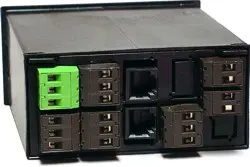
Key Features
- Meets 1/8 DIN Standard.
- Installs from front of panel.
- Short depth behind the panel: only 4" (102 mm) plus connectors.
- Understated 0.157" (4 mm) thick bezel.
- Meets NEMA 4X (IP-65) for high-pressure wawshdon when panel mounted.
- Screw clamps connectors meet VDE / IEC / UL / CSA safety standards.
- Rugged GE Lexan® housing material.
- Safety certified per EN 61010-1.
Dimensions
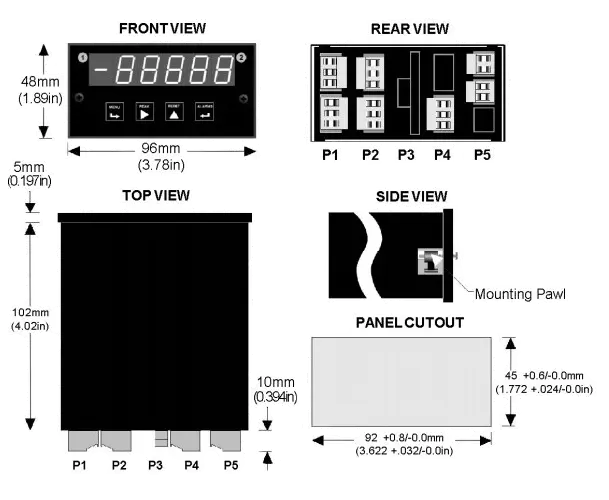
Maximum panel thickness: 4.5 mm (0.18")
Weight of base meter: 210 g (7.4 oz) typical (DPM, counter, timer, 6-digit remote display)
Weight of option boards: 30 g (1.0 oz) typical per board (analog output, relay output, communications)
Tightening Torque - Connectors: Screw terminal connectors: 5 lb-in (0.56 Nm)
Tightening Torque - Pawls: Digital Panel Meter Case Pawls: 5 lb-in (0.56 Nm)
Dimensioned CAD assembly drawings in EPRT, STEP, x_t. dwg, pdf file formats: Laureate-meter-case.zip (zipping prevents browser from opening CAD files as text files).
Panel Mounting
 Slide the meter into a 45 x 92 mm 1/8 DIN panel cutout. Ensure that the provided gasket is in place between the front of the panel and the back of the meter bezel.
The meter is secured by two pawls, each held by a screw, as illustrated. Turning each screw counterclockwise extends the pawl outward from the case and behind the panel. Turning each screw clockwise further tightens it against the panel to secure the meter.
Slide the meter into a 45 x 92 mm 1/8 DIN panel cutout. Ensure that the provided gasket is in place between the front of the panel and the back of the meter bezel.
The meter is secured by two pawls, each held by a screw, as illustrated. Turning each screw counterclockwise extends the pawl outward from the case and behind the panel. Turning each screw clockwise further tightens it against the panel to secure the meter.
Turning each screw counterclockwise loosens the pawl and retracts it into its well. This position allows installed meter to be removed from their panel, or new meters to be installed in a panel. Do not remove the screws from their pawls. Doing so would cause the screw and pawl to fall off and likely get lost. Do not overtighten so as not to damage the plastic parts.
| Up/Down Totalizing | |
|---|---|
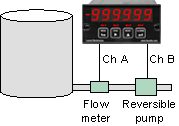
|
Up/down totalizing is provided by a mode of the Extended counter where pulses are either added or subtracted on Channel A based on a direction input on Channel B. The counter can also be programmed so that counting by Channel A is inhibited by an input on Channel B. |
| Combining Two Totals | |
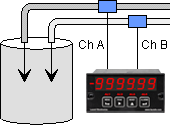 |
A+B, A-B and A/B arithmetic functions are available with the Extended counter. A+B sums both totals, while A-B subtracts the outflow total from inflow total. The A/B ratio applied to total helps assure the proper mixing of components. Controller setup and monitoring of the mixing operation are facilitated by optional serial communications. RS485 allows a single data line to handle multiple controllers. |
| Up or Down Counting with Preset | |
 |
A single Laureate dual-channel counter will handle two repetitive fill operations by counting from zero up to a preset, or down from a preset to zero. A dual setpoint relay board is required. |
| Machine Rune Time and Utilization | |
 |
An easy way to measure the run time of machines is to count AC line cycles and scale the total to hours. To display machine utilization or duty cycle in percent, use the Extended counter. Connect Channel A to switched AC and Channel B to the AC line, and have the counter display the A/B ratio with a 100 multiplier. |
| Total and Rate Simultaneously | |
 |
The Extended version of the Laureate dual channel counter can display scaled rate or total for the same channel at the push of a button, and alarm both the rate and total. The Extended version can also do curve linearization, thereby extending the working range and accuracy of flow transducers. |
| System-level Capabilities | |
| The Laureate dual channel totalizer can independently scale, display and alarm two totals, and the totals plus alarm data can be transmitted via RS232 or RS485. The displayed totals can also be transmitted as an isolated 4-20 mA or 0-10V analog output. The Extended version can further display and transmit arithmetic combinations of the two totals. | 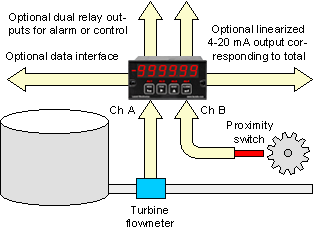 |
DLS-XLOG2
XLog2 Data logging Software
CON01
CON01 Connector
IPC
Splashproof Cover
CBL01
RS232 Cable for Meters
CBL02
USB-to-RS232 Adapter Cable
CBL04
RS232 Cable for LT Transmitters
CBL05
USB Data Cable for Meters
CBL06
USB-to-RS485 Adapter Cable
CBL07
USB Programming & Data Cable
CBL08
RS485 Splitter Cable
Modular Design for Maximum Flexibility at Minimum Cost
All boards are isolated from meter and power grounds. Optional Plug-in-Play boards for communications and control include Ethernet, WiFi, serial communication boards, dual or quad relay boards, and an analog output board. Laureates may be powered from 85-264 Vac or optionally from 12-32 Vac or 10-48 Vdc. The display is available with bright red or green 0.56" (14.2mm) high LED digits. The 1/8 DIN case meets NEMA 4X (IP65) specifications from the front when panel mounted. Any setup functions and front panel keys can be locked out for simplified usage and security. A built-in 5, 10, 12, or 24 Vdc excitation supply can power transducers, eliminating the need for an external power supply. All power and signal connections are via UL / VDE / CSA rated screw clamp plugs.
The Laureate™ Series features modular design with up to 7 isolated plug-in boards, applicable to all Laureate 1/8 DIN Panel Meter.

Modular Hardware
The design of the Laureate™ Series is modular for maximum flexibility at minimum cost. All boards are isolated from meter and power grounds. The base configuration for a panel meter or counter consists of a main module (with computer and plug-in display boards), a power supply board, and a signal conditioner board. Optional plug-in-play boards include an isolated setpoint controller board, an isolated analog output board, and an isolated digital interface board. Modular design and a choice of plug-in options allow the Laureate to be customized for a broad range of applications from simple monitoring to control and computer interface. There can be up to five plug-in boards in a 1/8 DIN Laureate.

Connecting Laureate Panel Meter to a Local Area Network (LAN)
Up to 30 Laureate Panel Meter and/or LT Transmitters can be configured for RS485 and daisy-chained to an LT Transmitter using Laurel’s High Speed Ethernet-to-RS485 converter board for seamless LAN integration. Alternatively, Laurel LTE series Ethernet transmitters can connect directly to a LAN via an Ethernet cable. Setup for both configurations is streamlined using Laurel’s free Instrument Setup Software, which simplifies node discovery and transmitter configuration.
Flexible Communication Options for Panel Meter
The Laureate Panel Meter can be equipped with Laurel communication boards to support various interfaces and protocols. These include serial interfaces with ASCII or Modbus RTU protocols, and Ethernet interfaces with web access, ASCII, or Modbus TCP/IP protocols, ensuring versatile connectivity for your commercial applications.

What is a 1/8 DIN Panel Meter Dual-Channel Pulse Input Totalizer?
Introduction
In the realm of industrial automation and process control, precision, reliability, and versatility are critical for maintaining operational efficiency. A 1/8 DIN Panel Meter Dual-Channel Pulse Input Totalizer is a highly specialized instrument designed to meet these demands. It is engineered to monitor, display, and manage pulse inputs from two independent channels simultaneously, making it an indispensable tool in applications requiring accurate tracking of pulse signals. From manufacturing plants to energy management systems, this Panel Meter ensures seamless data collection and process optimization, enhancing system performance across various industries.
Understanding the 1/8 DIN Standard
The term "1/8 DIN" refers to a standardized size specification established by the Deutsches Institut für Normung (DIN), a German standards organization. A 1/8 DIN Panel Meter measures approximately 96mm x 48mm, a compact footprint that allows for easy integration into control panels, dashboards, or instrumentation setups. This standardized size ensures compatibility with a wide range of industrial enclosures, making it ideal for environments where space is limited but clear, reliable data display is essential. The compact design of the Panel Meter does not compromise its functionality, as it provides a robust platform for displaying critical operational data.
Dual-Channel Pulse Input Totalizer: Overview
A dual-channel pulse input totalizer is a type of Panel Meter specifically designed to count and display pulse signals from two separate input sources. These pulses are typically generated by sensors such as flow meters, rotary encoders, or proximity switches. By processing these signals, the Panel Meter provides real-time data on quantities like flow rates, production counts, or energy usage. Its dual-channel capability allows it to monitor two independent processes simultaneously, making it a powerful tool for applications requiring comparative analysis or multi-process tracking.
Key Features and Functions
-
Dual-Channel Monitoring: The Panel Meter can process pulse inputs from two separate channels, enabling simultaneous monitoring of multiple processes or devices. This is particularly useful in scenarios where two independent systems, such as production lines or pipelines, need to be tracked concurrently.
-
Pulse Counting and Totalization: The primary function of the Panel Meter is to count pulses and maintain a running total, which is displayed on its interface. This totalization capability is critical for applications like tracking material flow, counting production units, or monitoring energy consumption.
-
Scalability and Flexibility: The Panel Meter offers configurable scaling options, allowing users to convert raw pulse counts into meaningful units, such as liters, kilograms, or kilowatt-hours. This adaptability ensures the device can be tailored to a wide range of industrial applications.
-
Advanced Display Options: Equipped with a high-visibility digital display, typically using LED or LCD technology, the Panel Meter ensures readability in diverse lighting conditions. Many models include backlighting and customizable display formats for enhanced user experience.
-
Alarm and Relay Outputs: Advanced versions of the Panel Meter include programmable alarm and relay outputs. These can be configured to trigger actions, such as activating a warning signal or shutting down a process, when specific thresholds or counts are reached, adding a layer of automation and control.
-
Seamless Integration: The 1/8 DIN standard size, combined with support for various input types (e.g., NPN, PNP, or voltage pulses) and output options (e.g., analog, digital, or Modbus communication), makes the Panel Meter easy to integrate into existing control systems.
-
Robust Design: Built to withstand harsh industrial environments, the Panel Meter typically features rugged enclosures with high IP ratings for dust and water resistance, ensuring long-term reliability in challenging conditions.
Applications of a Dual-Channel Pulse Input Totalizer
The versatility of the 1/8 DIN Panel Meter with dual-channel pulse input totalizer makes it a valuable asset across a wide range of industries. Its ability to process and display pulse data from two sources ensures precise monitoring and control in complex systems. Below are some key applications:
-
Manufacturing and Production Lines: In manufacturing facilities, the Panel Meter is used to monitor and compare production outputs from two separate lines or machines. For example, it can track the number of items produced or the operational cycles of machinery, ensuring accurate production tracking and quality control.
-
Flow Measurement: In industries like chemical processing, water treatment, or oil and gas, the Panel Meter interfaces with flow meters to totalize the flow of liquids or gases. This data is critical for maintaining process efficiency, ensuring regulatory compliance, and optimizing resource usage.
-
Material Handling: In conveyor-based systems, the Panel Meter counts items or packages moving along different sections of a conveyor belt. This ensures accurate inventory tracking and helps prevent bottlenecks or errors in material handling processes.
-
Energy Management: The Panel Meter is used in power distribution systems to totalize pulses from energy meters, providing real-time data on electricity consumption. This supports cost management and energy optimization in commercial buildings, factories, and utilities.
-
Packaging Systems: In automated packaging lines, the Panel Meter tracks the number of packages processed or filled, ensuring consistency and accuracy in high-speed operations.
Benefits of Using a 1/8 DIN Panel Meter
The 1/8 DIN Panel Meter with dual-channel pulse input totalizer offers several advantages that make it a preferred choice in industrial settings:
- Compact Design: Its small footprint allows for easy installation in crowded control panels, maximizing space efficiency without sacrificing functionality.
- High Accuracy: The Panel Meter delivers precise pulse counting and totalization, ensuring reliable data for critical decision-making.
- Versatility: With support for multiple input types and configurable scaling, the Panel Meter adapts to diverse applications, from flow measurement to production monitoring.
- User-Friendly Interface: The intuitive display and programmable settings make the Panel Meter accessible to operators with varying levels of technical expertise.
- Cost-Effective: By providing dual-channel monitoring in a single device, the Panel Meter reduces the need for multiple instruments, lowering equipment costs and simplifying system design.
Technical Specifications
While specific features vary by model, a typical 1/8 DIN Panel Meter with dual-channel pulse input totalizer includes the following specifications:
- Input Types: Supports NPN, PNP, voltage pulses, or dry contact inputs.
- Counting Speed: Capable of handling high-frequency pulses, often up to 10 kHz or higher, depending on the model.
- Display: 4-6 digit LED or LCD display with customizable decimal points and units.
- Power Supply: Typically supports 12-24V DC or 85-265V AC, accommodating various industrial power systems.
- Communication Options: RS-485, Modbus RTU, or analog outputs for integration with PLCs or SCADA systems.
- Environmental Rating: IP65 or higher for front-panel protection against dust and water.
Where Is a 1/8 DIN Panel Meter Dual-Channel Pulse Input Totalizer Used?
The 1/8 DIN Panel Meter with dual-channel pulse input totalizer is a cornerstone in industries requiring precise measurement and control of pulse-based data. Its ability to handle two independent pulse inputs makes it suitable for a wide range of applications. Below is a detailed look at its use cases:
1. Industrial Automation and Process Control
- Flow Measurement: In industries like chemical processing, water treatment, and oil and gas, the Panel Meter interfaces with flow meters to monitor and totalize the flow of liquids or gases. This ensures accurate tracking of material usage and compliance with industry standards.
- Batch Processing: In batch processing systems, the Panel Meter measures the total material dispensed by summing pulses over time. It can trigger actions like valve shutoff or process termination when target quantities are reached, enhancing automation.
- Motion Control: In systems involving motors or rotary encoders, the Panel Meter tracks rotational speed or position, providing critical data for precise motion control.
2. Energy Monitoring
- Electricity Metering: The Panel Meter counts pulses from kilowatt-hour (kWh) meters to monitor electrical consumption in real time. This data supports energy audits, cost allocation, and efficiency improvements in commercial and industrial settings.
- Renewable Energy Systems: In solar, wind, or hydroelectric systems, the Panel Meter tracks energy production by totalizing pulses from power meters, enabling accurate performance monitoring and system optimization.
3. Manufacturing
- Machine Monitoring: The Panel Meter tracks machine cycles, part counts, or operational hours, providing data for predictive maintenance and production planning.
- Assembly Lines: In automated assembly lines, the Panel Meter monitors the quantity or speed of items moving through different stages, ensuring production targets are met and quality standards are maintained.
4. Environmental Monitoring
- Water and Wastewater Treatment: The Panel Meter totalizes pulses from flow meters to monitor the volume of treated water or wastewater, supporting regulatory compliance and process optimization.
- Air Quality Monitoring: In environmental monitoring systems, the Panel Meter counts pulses corresponding to sampled air volumes, aiding in the assessment of air quality and pollution levels.
5. Building Management Systems (BMS)
- HVAC Systems: In building management, the Panel Meter monitors HVAC performance by counting pulses from flow meters for chilled or heated water, optimizing energy use and maintaining indoor comfort.
- Lighting Control: In commercial buildings, the Panel Meter tracks energy consumption from lighting circuits, supporting energy-saving initiatives and cost management.
Conclusion
The 1/8 DIN Panel Meter Dual-Channel Pulse Input Totalizer is a versatile, reliable, and compact solution for industrial and commercial applications requiring precise pulse measurement and totalization. Its dual-channel capability, standardized size, and robust feature set make it an essential tool for monitoring and controlling processes in manufacturing, energy management, environmental monitoring, and beyond. By delivering accurate data and seamless integration, the Panel Meter enhances operational efficiency, ensures regulatory compliance, and supports data-driven decision-making in modern automation systems.
Less Information.








